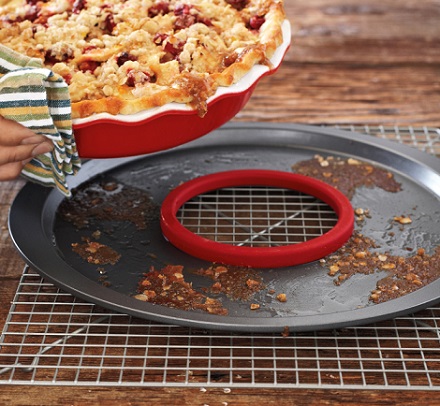
Pie weights are used to hold down a crust during blind baking, where a crust is partially baked before being filled with pie filling. Since pie crusts are made with layers of butter, which allow them to take on a crisp and flaky texture, they tend to puff up in the oven if they are not weighted down. When a crust is puffy on the bottom, it not only leads to a less-than-perfect looking finished pie, but it creates spaces that pie filling can seep into, leading to a soggy crust and and unevenly baked filling.
Pie weights are often small ceramic or metal balls that can be placed on top of a pie crust before baking, but they can come in many shapes and sizes. While a set of “real” weights is a nice addition to your baking collection, you don’t have a set of “official” weights because you can easily make your own using things that you have in your pantry right now: uncooked rice and dried beans.
To make and use your own pie weights: Line an unbaked pie shell with parchment paper or aluminum foil. Add uncooked rice or dried beans until the pie shell is half full, approximately 3-4 cups. Since the rice and beans are small, they will spread out evenly to hold your pie crust down, even if they’re not as heavy as some commercially available pie-specific weights. Bake the crust as directed and lift out the parchment/foil with the rice/beans inside before proceeding with your recipe.
Metal and ceramic weights can be used time after time. These DIY weights can also be used repeatedly. To store them, simply allow them to cool completely and then transfer them into a sealable container, such as a ziploc bag or a Tupperware-style box. Label the container that you store them in, as you should not cook these extra-dried dried goods for dinner, though you can use them dozens of times as pie weights with great results.






What do you think?